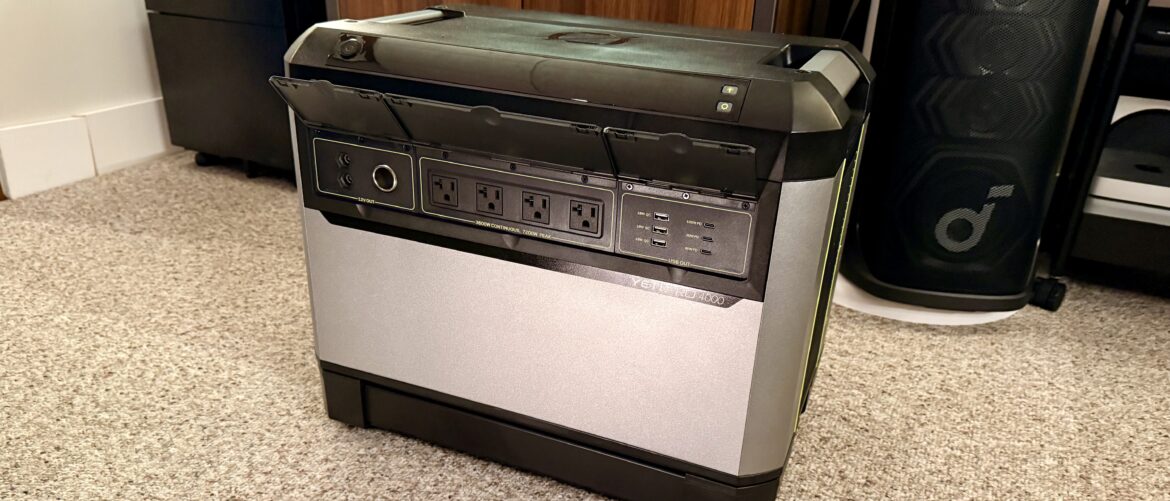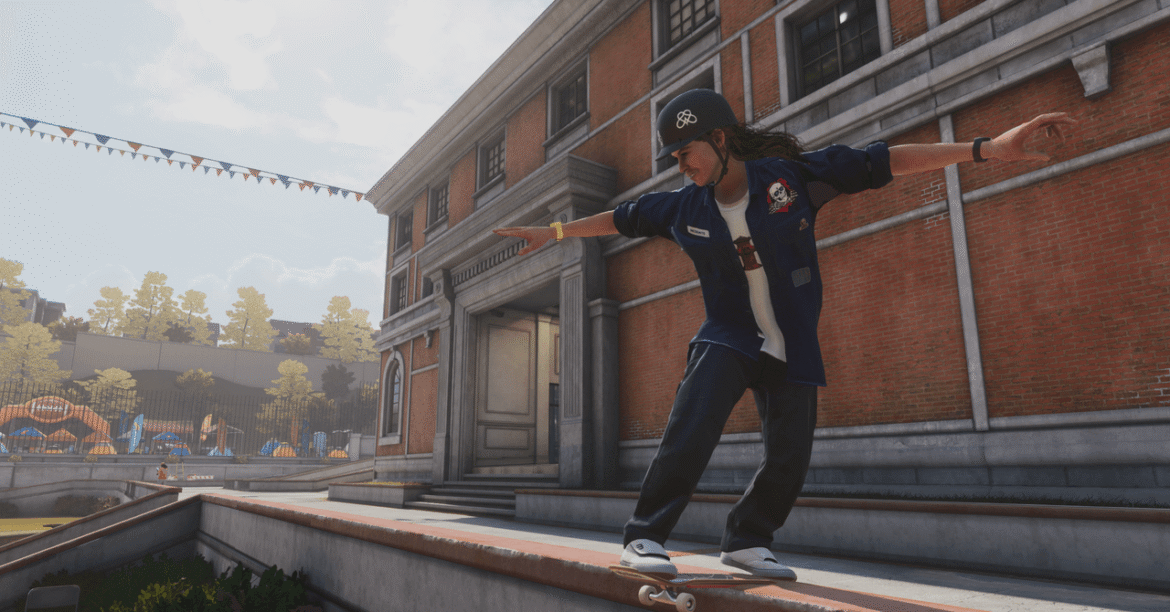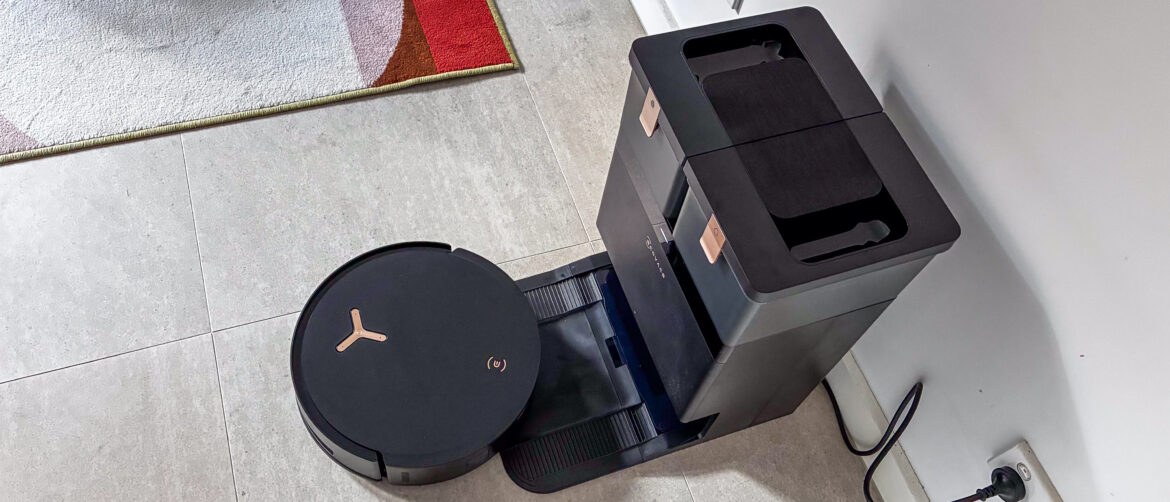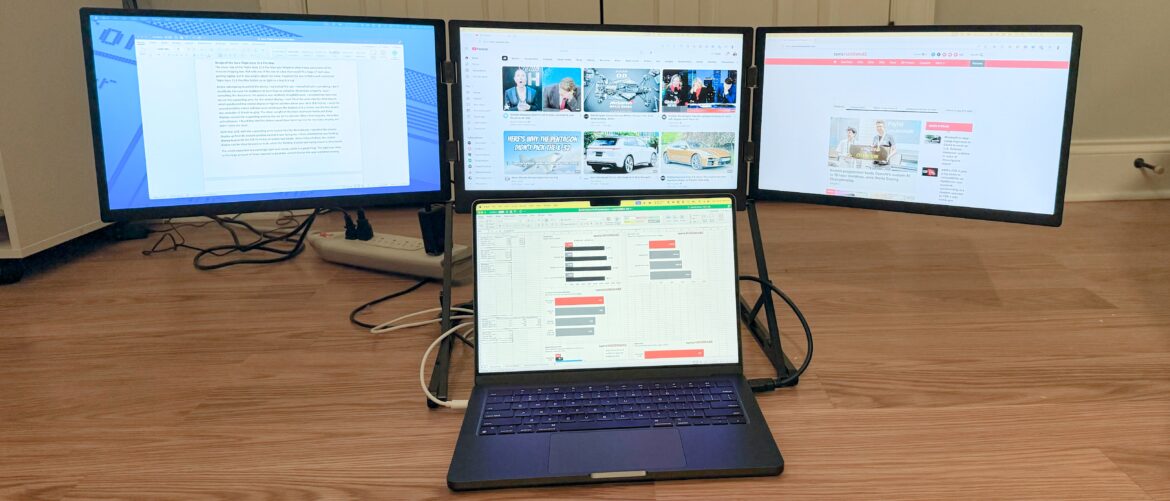Why you can trust TechRadar
We spend hours testing every product or service we review, so you can be sure you’re buying the best. Find out more about how we test.
The Goal Zero powerstation lineup is impressive, especially since their merger with BioLite. According to Goal Zero, the Yeti Pro 4000 is their most remarkable power station yet. It boasts a high output, high capacity, high weight, and a high price to match.
There are several different setups that this power station can support. First, there are Haven Setups that provide additional capacity and a home connection point, allowing a home to function as a battery backup. Second, there is an option to integrate solar power, enabling recharging from the sun. Lastly, there is an escape system that can either convert a towable RV into a system powered by the Goal Zero Yeti Pro 4000 or a drivable kit that transforms an adventure vehicle into a system backed by the Yeti Pro 4000.
No matter what the use case is, if you need a large amount of reliable power, high output, and you’re willing to pay for quality gear, this system could be the right fit for you. Goal Zero’s goal with the Yeti Pro 4000 was to replace noisy and messy traditional gas generators – and they’ve done it.
I will note here that I have seen some notes about reliability issues that some have had with this unit, though I have not experienced that myself. So far, I haven’t had any problems.
(Image credit: Collin Probst // TechRadar Pro)
- Goal Zero Yeti Pro 4000 at Amazon for $2,379.89
Goal Zero Yeti Pro 4000: Pricing & Availability
The Goal Zero Yeti Pro 4000 is available on Goal Zero’s website for just under $4000. There are other retailers selling, including Amazon.com.
You can pick up an expansion battery to extend the capacity for another $2000, and there are other accessories to outfit this even further.
Worth noting that I’m seeing limited availability outside the US right now.
(Image credit: Collin Probst // TechRadar Pro)
Goal Zero Yeti Pro 4000: Design & build quality
Specs
Battery: ~3,994 Wh (LiFePO₄), 4,000+ cycles
Power: 3,600 W continuous; 7,200 W surge
Recharge: 1,800 W AC inlet; up to 3,000 W solar
The Goal Zero Yeti Pro 4000 is not a compact device. It’s pretty cumbersome, so it has a wheeled base that comes with the standard purchase to facilitate more effortless movement.
However, what it misses in ease of mobility, it makes up for in pure power. The output is phenomenal for this size, and the choice in port layout makes sense. All of the inputs are on the back of the unit, plus the inverter you would use if you are plugging into the Haven system, for example.
All of the output ports are on the front, making it super simple if you want to set this unit up and leave it somewhere for an extended period. You can set it and forget it, and still you’re able to plug in everything you may need to without moving the unit around, unless you are changing primary inputs, which is less familiar to change around than outputs.
(Image credit: Collin Probst // TechRadar Pro)
Goal Zero Yeti Pro 4000: In use
The Yeti Pro 4000 by Goal Zero is designed to carry a heavy load, all without any issue. It’s intended to be a home backup, a primary power system on the road, or even a primary system for an off-grid building.
It’s rated to run a residential fridge for 1-2 days, while also running a Wi-Fi Setup, basic lighting, and other essentials. If you connect to solar, depending on the sun, you can keep things running for longer. You recharge with the sun and then run off the battery when the sun is not out, and recharge via the solar panels.
For home use, this is an easy option. Set it, forget it, keep it tucked away, hooked up to your house with a Haven backup system. If your home requires more power, you can add more tanks, which adds capacity to run off-grid for longer.
For those who are looking for an RV/Van Life/Off-Grid Camper solution, you can have this unit in the corner of your setup, or tucked away and have it plugged in with the Escape system to have an integrated screen and complete system, meaning you’ll never even have to touch this unit, or if you don’t want to do that, you can plug anything and everything you need into the front of this unit, have any solar input plugged into the back, and then you can run things that way.
If you do choose to add the Escape System, you can then add an integrated screen wherever you want in the vehicle or trailer to control all aspects of the Yeti Pro 4000 while the unit itself is tucked away. Add this to a system where you have outlets placed where you want them throughout your off-grid home on wheels, and it will feel like you’re in a standard home when it comes to power convenience.
Some people don’t need a semi-permanent setup, and they want something that can be brought out for job sites, one-off jobs, or similar projects. The Yeti Pro 4000 can be great for this, too, as long as you have a good way to transport it there. But, if you work at a job site and you want to be able to swap out the traditional generator for a portable power station to recharge tools, run a table saw, or similar tasks, this is a great solution.
Goal Zero Yeti Pro 4000: Final verdict
No matter your potential solution, this power station is a serious one worth considering. It could power you for days on the road if used reasonably, and it could back up essentials in your home in the case of a power outage. The Yeti Pro 4000 has a great set of offerings for expansion, and it is built to last. If you’re looking for a high-powered, high-capacity, and highly reliable power station, the Yeti Pro 4000 is one worth considering – keep in mind that it’s not easy to move.
Swipe to scroll horizontally
Attributes
Notes
Rating
Design
Hefty, robust.
⭐⭐⭐⭐⭐
Ease of use
Easy to use
⭐⭐⭐⭐
Practicality
Practical for heavy users
⭐⭐⭐⭐
Price
Expensive
⭐⭐⭐⭐⭐
For more power solutions, we’ve tested and reviewed the best portable power stations.
Goal Zero Yeti Pro 4000: Price Comparison






